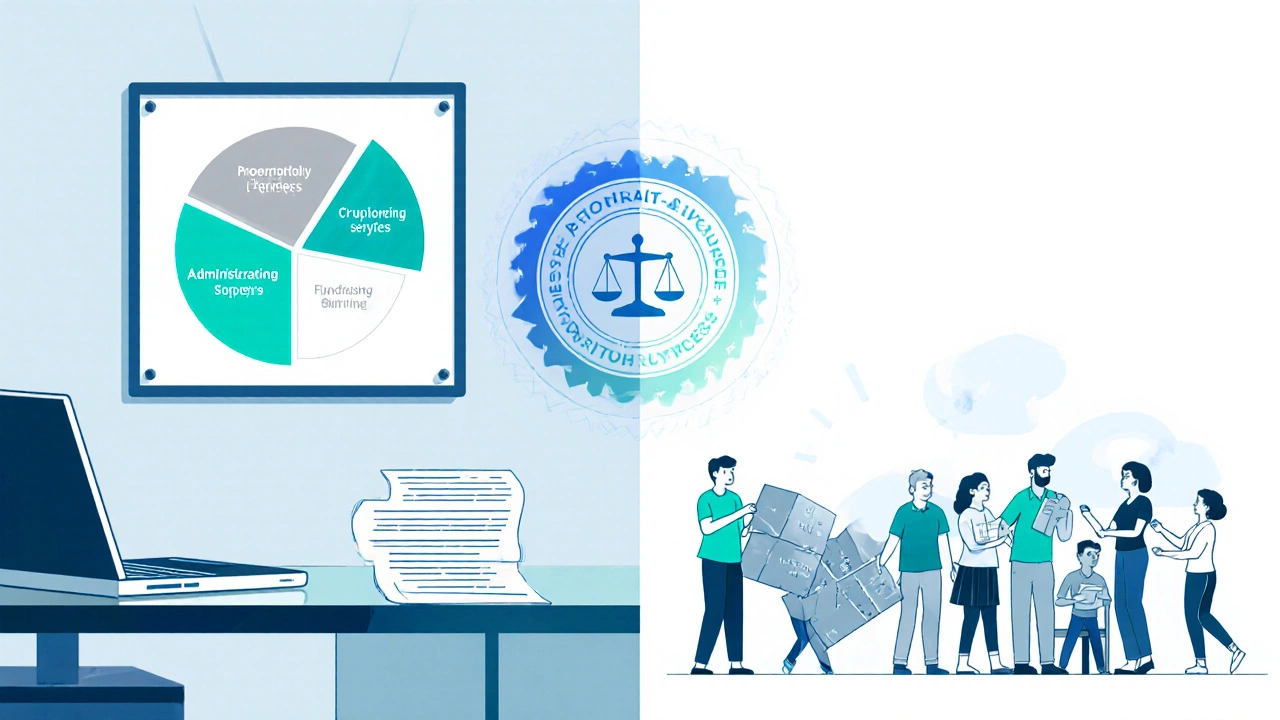Volunteer Impact Calculator
Calculate Your Volunteer Impact
See how much a nonprofit saves by using volunteers instead of paid staff. Enter the hourly rate, hours worked, and benefit costs to understand the financial impact of volunteer work.
Your Volunteer Impact
When people talk about giving their time, Volunteer is an individual who offers services without receiving monetary compensation. The idea of working for free can feel puzzling, especially in a world where labor is usually measured in wages. This article unpacks the reasons behind the widespread practice of unpaid service, looking at the financial realities of charities, the legal safeguards that keep volunteering distinct from employment, and the personal motivations that drive people to help without a paycheck.
Key Takeaways
- Nonprofit organizations rely on volunteers to stretch limited budgets.
- Labor laws in many countries deliberately separate volunteer work from paid employment.
- Volunteers often receive non‑monetary rewards such as skill development, social connections, and personal fulfillment.
- Communities benefit from increased social capital and lower service costs.
- Understanding these dynamics helps both volunteers and organizations set realistic expectations.
Economic Reasons Behind Unpaid Volunteering
Running a charitable program isn’t cheap. Nonprofit organization a mission‑driven entity that reinvests any surplus back into its cause must balance program delivery with fundraising, overhead, and compliance costs. Hiring a paid staff member adds salary, benefits, payroll taxes, and often insurance premiums. By tapping into volunteers, an organization can allocate a larger share of its limited funds directly to services such as food distribution, disaster relief, or tutoring.
Funding sources matter, too. Many grants and donations come with strict rules: a percentage of the budget must be spent on program activities, not salaries. When volunteers fill roles that would otherwise require paid employees, the organization meets those requirements and remains eligible for future funding.
Legal and Regulatory Framework
In most jurisdictions, labor statutes draw a clear line between volunteerism and employment. Labor law the body of rules governing employer‑employee relationships prohibits organizations from paying volunteers for work that would otherwise be done by a paid employee, to prevent exploitation and protect workers’ rights. For instance, the United States Fair Labor Standards Act (FLSA) states that volunteers for nonprofit (or governmental) entities must not be compensated, except for reimbursements of out‑of‑pocket expenses.
These regulations also safeguard volunteers from being misclassified. Misclassification can lead to legal penalties for the organization and loss of benefits for the worker. By keeping the relationship clear-no salary, no employee benefits-both parties stay on solid legal ground.

Motivational Drivers for Volunteers
People don’t give their time for free without a reason. Volunteer motivation the psychological factors that inspire individuals to contribute their time and skills falls into several categories:
- Altruism: A genuine desire to help others or support a cause.
- Skill building: Gaining experience that can boost a résumé or aid career transitions.
- Social connections: Meeting like‑minded people and expanding one’s network.
- Identity and purpose: Aligning actions with personal values and life goals.
- Recognition: Receiving awards, certificates, or public acknowledgment.
Surveys by the Corporation for National and Community Service (CNCS) consistently show that over 70% of volunteers cite personal satisfaction as a top reason, proving that non‑monetary rewards can be highly compelling.
Benefits for Organizations and Communities
When volunteers step in, communities enjoy a ripple effect. Social capital the networks, norms, and trust that facilitate cooperation within a society grows as residents build relationships through service. This leads to lower crime rates, higher civic participation, and stronger neighborhood resilience.
From the organization’s side, volunteers bring diverse perspectives and fresh ideas that can improve program design. Many nonprofits credit volunteer feedback for innovations such as mobile food‑bank apps or peer‑mentor tutoring models.
Comparison: Paid Staff vs Volunteers
| Aspect | Paid Staff | Volunteer |
|---|---|---|
| Compensation | Salary, wages, benefits | No monetary pay; possible expense reimbursement |
| Legal obligations | Employment contracts, payroll taxes, workers’ comp | Minimal; governed by volunteer agreements and labor law exceptions |
| Motivation | Financial security, career advancement | Altruism, skill development, social ties |
| Turnover risk | Lower, but subject to market forces | Higher; volunteers may leave after short stints |
| Impact on budget | Significant recurring cost | Cost‑effective; frees funds for program delivery |

Common Misconceptions
Some critics argue that unpaid labor exploits workers or devalues professional expertise. While those concerns are valid in contexts like unpaid internships that replace paid roles, true volunteerism differs. Volunteers usually perform tasks that complement, not replace, core staff functions. Moreover, many organizations provide training, mentorship, and formal recognition to ensure the experience is mutually beneficial.
Another myth is that volunteers are “unskilled.” In reality, volunteers range from high‑school students to retired engineers, each bringing a unique skill set. Effective Volunteer management the practice of recruiting, training, and retaining volunteers systems match people’s abilities with appropriate tasks, maximizing impact.
How to Choose the Right Volunteer Role
For prospective volunteers, the decision often starts with personal goals. Ask yourself:
- Do I want to develop a specific skill (e.g., graphic design, event planning)?
- Am I looking to meet people who share my passion?
- How much time can I commit regularly?
- What causes align with my values?
Once you have answers, look for nonprofits that list clear role descriptions, training opportunities, and any required background checks. Reputable organizations will be transparent about expectations, time commitments, and any reimbursements for travel or supplies.
Remember that volunteering is a two‑way street. While you give your time, you also gain experience, connections, and a sense of purpose. Choosing a role that fits your motivations ensures a rewarding experience for both you and the community.
Frequently Asked Questions
Can volunteers be reimbursed for expenses?
Yes. Most charities reimburse reasonable out‑of‑pocket costs such as travel, meals, or supplies, as long as the expenses are documented and approved.
Is volunteering considered work for tax purposes?
In many countries, volunteer time itself is not tax‑deductible, but expenses incurred while volunteering (e.g., mileage) may be claimed as charitable deductions.
How do nonprofits ensure volunteers aren’t misclassified as employees?
They use clear volunteer agreements, avoid assigning tasks that would normally be paid, and keep the relationship voluntary-not compulsory.
What are the biggest benefits of volunteering for my career?
Volunteering can build transferable skills, expand your professional network, and provide concrete examples of leadership and teamwork on your résumé.
Can volunteering replace paid internships?
Only when the role truly adds value beyond what a paid intern would do. If the work substitutes a paid position, it may violate labor laws and be unethical.
Volunteerism thrives because it meets real financial constraints, obeys legal boundaries, and satisfies deep human motivations. Understanding why volunteers aren’t paid helps both organizations and individuals create sustainable, rewarding partnerships that strengthen communities.



